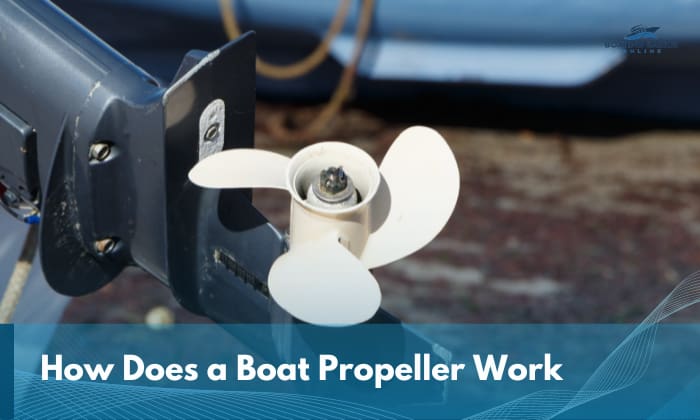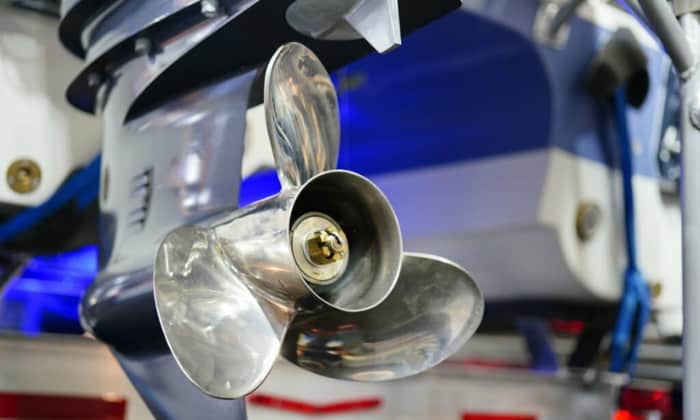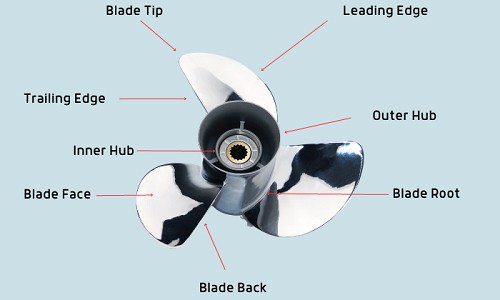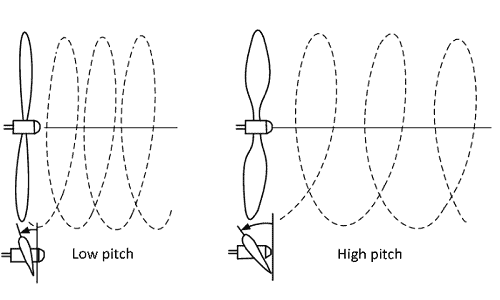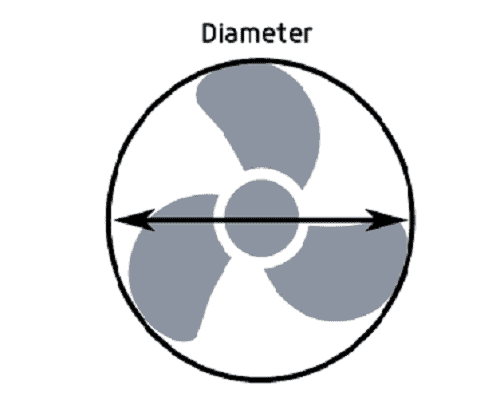Every time you ride a boat, have you ever wondered what lies beneath the surface of the beautiful marine scene you’re beholding? For instance, what is it exactly that’s propelling you forward?
In the world of boating, there’s a hidden hero, often overlooked but undeniably essential—the boat propeller.
How does a boat propeller work? I will do my best to answer this question, reveal the most common types of boat propellers, and how they affect boat performance as a whole.
Table of Contents
The Basics of Boat Propellers
At its core, a boat propeller is a rotating hub with radiating blades, driven by the ship’s engine to produce thrust.
This thrust is generated by the interaction of the blades with the water, a perfect example of Newton’s third law of motion, which states that every action has an equal and opposite reaction.
In this case, the action is the propeller pushing water backward, and the reaction is the boat moving forward—a testament to the laws of physics on a boat.
It’s equally important to touch upon the role of Bernoulli’s principle on boat propeller mechanism.
Basically, it occurs due to the curvature of the propeller blades reducing pressure in the front of the blade while increasing the pressure in the back of the blade. This occurrence creates a pressure difference that produces the propelling motion.
1. Parts of a Boat Prop
The components I’ve listed below are essential for understanding how a boat propeller works and how it generates thrust for propulsion.
- Blade Tip – The outermost extent of the propeller
- Leading Edge – Initiates the flow of water over the blade
- Trailing-Edge – Completes the passage of water over the blade
- Cup – Helps improve water grip during thrust
- Blade Face – Creates positive pressure for propulsion
- Blade Back – Generates negative pressure or suction, aiding thrust
- Blade Root – Connects the blade to the hub, transmitting thrust
- Inner Hub – Protects the drivetrain when the prop hits an obstacle
- Outer Hub – Acts as a surface for blade attachment
2. Types of Boat Propellers
Affordable and low drag Efficient but may offer a less smooth ride Offers better acceleration and lift. Provides a smooth ride but is less fuel-efficient. Offers the smoothest ride with minimal vibrations. Less fuel-efficient but suitable for rough waters. Reduces the risk of entanglement with aquatic plants. Typically made from aluminum or stainless steel. Sturdy, damage-resistant, and cost-effective. More efficient than fixed pitch types but are more costly and may result in higher oil pollution
Type of Propeller
Qualities
By Number of Blades
Three-Blade Propellers
Common for various boat engine types
Four-Blade Propellers
Ideal for water sports and faster boats.
Five-Blade Propellers
Suitable for large boats, heavy loads, and uncertain waters.
Six-Blade Propellers
Uncommon and expensive.
By Blade Shape
Weedless Propellers
Designed for areas with heavy weeds and vegetation.
Conventional Propellers
Feature a round blade shape, suitable for general use.
By Blade Pitch
Fixed Pitch Propellers
Blades and pitch are fixed and cannot be adjusted.
Controllable Pitch Propellers
Blades and pitch are adjustable.
How Propeller Pitch and Diameter Affect Performance
1. Propeller Pitch
Propeller pitch determines how far the propeller moves forward in one revolution, much like gears in a car. Lower pitch provides quick acceleration but sacrifices top speed, making it ideal for strong “hole-shots” in propulsion systems.
Conversely, a higher pitch results in slower acceleration but a higher maximum speed, resembling the higher gears in a car.
However, excessive pitch for the engine’s power can strain the engine, making it less than ideal for achieving efficient and smooth operation.
2. Propeller Diameter
Diameter measures the circle formed by the blade tips. A larger diameter propeller moves more water, creating more power. Yet, it also increases engine load due to greater resistance, potentially reducing the top speed.
Prop diameter varies for different boat types and engine power levels. By adjusting the propeller diameter according to the boat and engine power levels, you can optimize the balance between power and fuel efficiency.
Conclusion
So how does a boat propeller work again? To sum up what we discussed, it’s the unseen force that propels you forward – which would not have been possible without the culmination of physics and engineering expertise working in perfect harmony.
For all a boat propeller’s silent operation beneath the water’s surface, its significance can’t be denied and reverberates throughout your entire boating experience.
Just think about it: without a boat propeller, any boat that isn’t sail-driven or designed to move without a propeller will not be able to move at all!

“My intention from the first day establishing Boating Basics Online is to provide as much help as possible for boaters who want to experience a first safe and convenient trip. So feel free to join us and share your beautiful journeys to the sea!”

